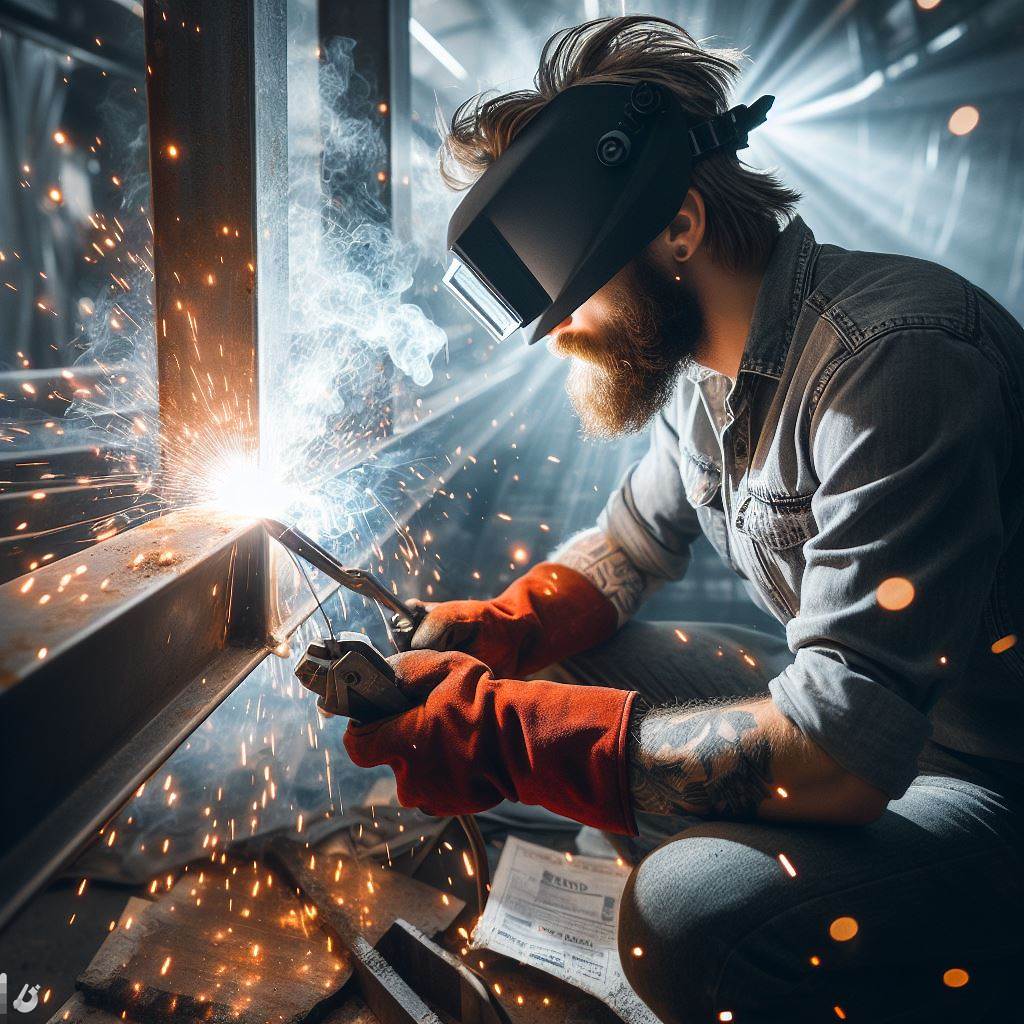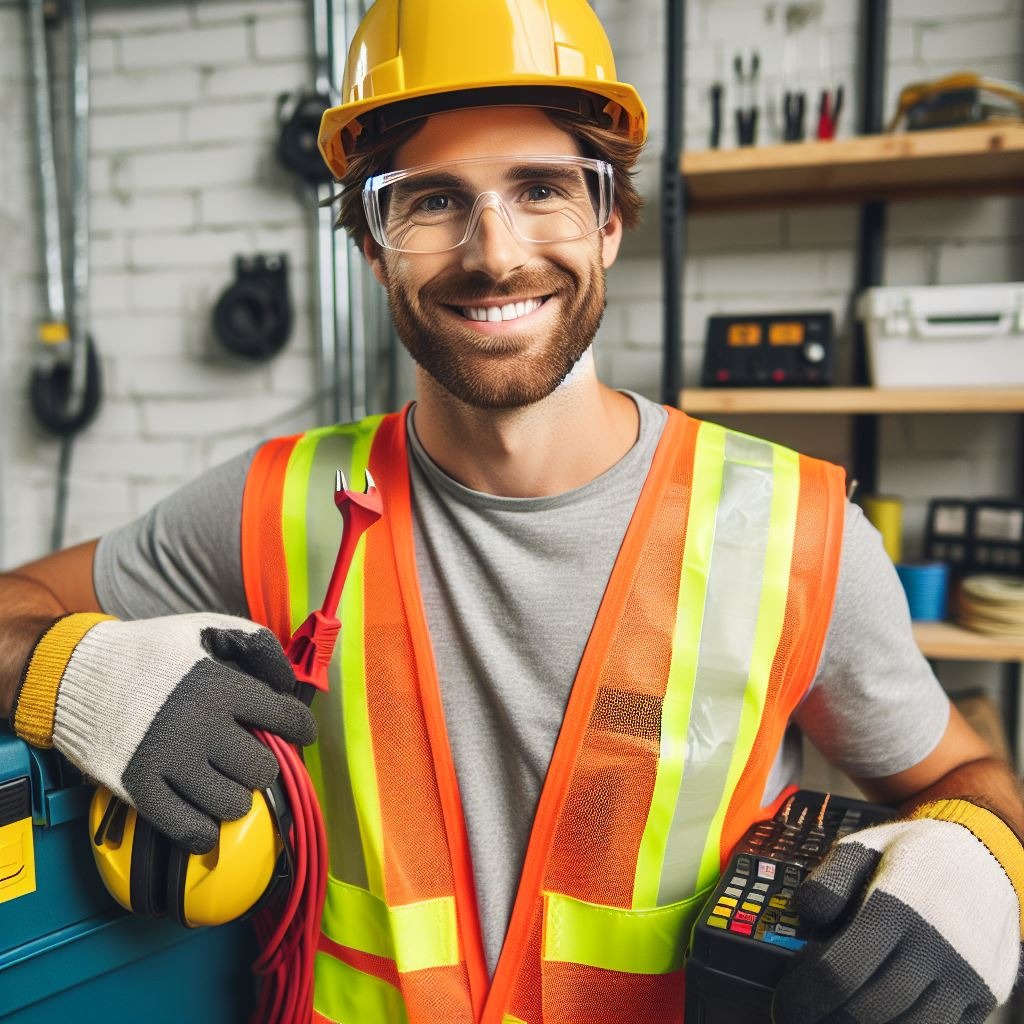Introduction
In the world of welding, having the right tools and equipment is crucial for beginners.
Having the proper welding tools and equipment is essential for beginners to ensure safety and efficiency in their work.
Welcome to the captivating universe of welding, where the alchemy of heat and metal converges to create both functional structures and intricate works of art.
As a novice in this dynamic field, you are about to embark on a journey that melds creativity with technical prowess.
This blog post will cover various topics related to welding tools and equipment, including types, functions, and safety precautions.
In this comprehensive beginner’s guide, we’ll unravel the mysteries behind welding tools and equipment, offering you a roadmap to navigate the diverse landscapes of welding techniques.
From the rhythmic dance of the welding arc to the strategic choice of materials, each step in this process is a brushstroke on the canvas of fabrication.
Discover the significance of protective gear, the nuances of various welding methods, and the synergy between tools and craftsmanship.
This guide is your companion in understanding the fundamental principles that underpin the world of welding, empowering you to forge connections between your imagination and the tangible reality of welded masterpieces.
Whether you’re entering this realm for a hobby or aspiring to join the ranks of skilled welders, let this guide be your compass as you embark on a transformative journey.
With each weld, you’ll not only be shaping metal but also honing a craft that blends technical expertise with artistic expression.
Welcome to the artistry of welding, where every bead of molten metal tells a story of skill, precision, and boundless creativity.
Read: Salary Guide: Welders in Canada 2024
Different Types of Welding Tools and Equipment
Welding Machines
Welding machines play a crucial role in the welding process. There are several different types:
- Stick Welding Machines
- MIG Welding Machines
- TIG Welding Machines
Stick welding machines, also known as Shielded Metal Arc Welding (SMAW), are commonly used for its versatility and affordability.
MIG welding machines utilize a wire electrode which helps provide a stable and continuous welding process.
TIG welding machines use a tungsten electrode and are known for producing high-quality welds with excellent precision.
Each welding machine serves a specific purpose and has its own set of advantages and limitations.
Personal Protective Equipment (PPE)
When it comes to welding, personal protective equipment (PPE) is of utmost importance for the safety of the welder.
Some essential PPE items for welding include:
- Welding Helmet
- Protective Gloves
- Welding Jacket
Wearing a welding helmet is vital to shield the eyes and face from harmful UV radiation.
Protective gloves help safeguard the hands against burns, sparks, and electric shock.
A welding jacket provides protection for the upper body from heat, sparks, and molten metal.
Choosing the right PPE is crucial for beginners to ensure maximum safety during the welding process.
It’s recommended to opt for PPE that meets safety standards and provides adequate protection.
Unlock Your Career Potential
Visualize a clear path to success with our tailored Career Consulting service. Personalized insights in just 1-3 days.
Get StartedIn short, understanding different types of welding tools and equipment, including welding machines and personal protective gear, is essential for beginners.
By familiarizing themselves with these tools, beginners can ensure their safety and produce high-quality welds.
Read: Welding Apprenticeships: What to Expect
Essential Welding Tools
Welding is a highly skilled trade that requires the right tools and equipment to produce high-quality welds.
Without the essential welding tools, it would be impossible to create strong and durable welds.
In this section, we will discuss the important welding tools and equipment that every beginner needs to have in their arsenal.
Welding Electrodes and Filler Metals
One of the most crucial welding tools is welding electrodes and filler metals. These are consumable materials that are melted to join two pieces of metal together.
There are different types of electrodes and filler metals available, each with its own specific properties and applications.
It is important to understand the characteristics of these materials and choose the appropriate ones for your welding projects.
For example, certain electrodes and filler metals are better suited for welding stainless steel, while others are ideal for aluminum or cast iron.
Clamps and Magnets
Clamps and magnets are also vital tools in welding. They play a crucial role in holding workpieces together during the welding process.
Without proper clamping, the workpieces may shift or move, resulting in weld defects.
Various types of clamps and magnets are available, such as C-clamps, locking pliers, and magnetic welding squares.
It is essential to choose the right clamps and magnets based on the size and shape of the workpieces and the welding technique being used.
Wire Brushes and Chipping Hammers
Wire brushes and chipping hammers are additional tools that are used in welding.
They are used to clean the metal surfaces before welding to remove any dirt, rust, or other contaminants that can affect the quality of the weld.
Chipping hammers, on the other hand, are used to remove slag and spatter from the weld after it has cooled down.
It is important to select the right brushes and hammers based on the project requirements.
For example, stainless steel brushes should be used for stainless steel welds to avoid contamination.
In fact, welding tools are essential for achieving strong and aesthetically pleasing welds.
Welding electrodes and filler metals, clamps and magnets, and wire brushes and chipping hammers are all critical in the welding process.
By understanding the different types and selecting the appropriate tools for each project, beginners can ensure successful welds and improve their overall welding skills.
So, make sure to invest in these essential welding tools and equipment to kickstart your welding journey on the right foot.
Read: Mobile Welding: A New Era in the Industry

Equipment Maintenance and Safety Tips
Proper maintenance of welding tools and equipment is crucial for their longevity and optimal performance.
Cleaning and Maintaining Welding Tools and Equipment
Regular cleaning and maintenance of welding tools and equipment are essential to ensure their reliability and longevity.
Keeping your tools clean reduces the risk of contamination that could affect weld quality.
Remove any dirt, debris, or metal particles from the equipment using a wire brush or compressed air.
After cleaning, inspect the tools for any signs of wear and tear, damage, or loose parts. Replace or repair as necessary.
Don’t forget to clean and inspect the gas regulators, valves, hoses, and fittings.
Importance of Regular Cleaning and Maintenance for Longevity and Performance
By regularly cleaning and maintaining your welding tools and equipment, you can extend their lifespan and optimize their performance.
Proper maintenance reduces the risk of breakdowns and costly repairs, ensuring that your equipment operates efficiently.
Regular cleaning also prevents the accumulation of debris and contaminants that can affect the quality of your welds.
Step-by-Step Guide on Cleaning and Maintaining Welding Machines, PPE, Electrodes, etc.
Follow these steps to clean and maintain your welding equipment:
- Ensure the equipment is turned off and disconnected from the power source.
- Use a wire brush or compressed air to remove any dirt or debris from the surfaces.
- Inspect the equipment for any signs of damage or wear and tear.
- Check the gas regulators, valves, hoses, and fittings for leaks or loose connections.
- Clean and inspect the electrodes for any buildup or damage.
- Store the equipment in a dry and secure place to protect it from moisture and damage.
Regularly refer to the manufacturer’s guidelines and recommendations for specific cleaning and maintenance instructions.
Basic Safety Measures
Ensuring safety while welding should be the top priority for every beginner and experienced welder.
Importance of Following Safety Guidelines and Regulations While Welding
Adhering to safety guidelines and regulations is crucial to protect yourself and others from potential hazards.
Failure to follow safety measures can result in serious injuries, fires, or even fatal accidents.
A disciplined approach to safety ensures a safe working environment and enhances overall productivity.
Overview of Basic Safety Measures, Such as Wearing Appropriate PPE and Working in Well-Ventilated Areas
Here are some fundamental safety measures that every welder should adhere to:
- Always wear appropriate personal protective equipment (PPE), including a welding helmet, gloves, and safety glasses.
- Work in well-ventilated areas or use exhaust systems to prevent the inhalation of harmful welding fumes.
- Avoid wearing loose-fitting clothing or jewelry that could potentially get caught in the equipment.
- Keep a fire extinguisher nearby and know how to use it in case of emergencies.
- Maintain a clean and organized workspace to minimize tripping hazards and accidents.
Safety Certifications and Training Courses for Beginners
As a beginner, it is beneficial to enroll in safety certification programs or welding training courses.
These programs provide valuable knowledge and practical skills on safety practices, enhancing your competence as a welder.
Obtaining safety certifications improves your job prospects and gives you a competitive edge in the welding industry.
Remember, safety should always be the foundation of your welding practices to ensure a successful and secure career.
Read: How to Start Your Welding Career in Canada
Conclusion
The importance of welding tools and equipment for beginners cannot be overstated.
Proper tools are essential for a successful welding project, ensuring safety and accuracy in the process.
Throughout this guide, we have explored various types of welding tools and equipment, such as welders, helmets, gloves, and clamps.
These tools are not only necessary for beginners but also for experienced welders.
Selecting the right tools is crucial as they contribute to the quality of the welds performed.
It is important to choose tools that match the specific welding technique and material being used.
Additionally, maintaining the functionality of welding tools and equipment is essential for their longevity.
Regular cleaning, inspection, and servicing will prolong their lifespan and ensure they perform optimally.
Investing time and effort in learning and understanding welding tools and equipment is highly encouraged.
The more knowledge you gain, the better you can select the right tools for various welding projects.
By continuously exploring and staying updated, you can improve your welding skills and achieve better results.
There is always something new to learn in the world of welding tools and equipment.
So keep pushing yourself and enjoy the rewarding journey of welding!




